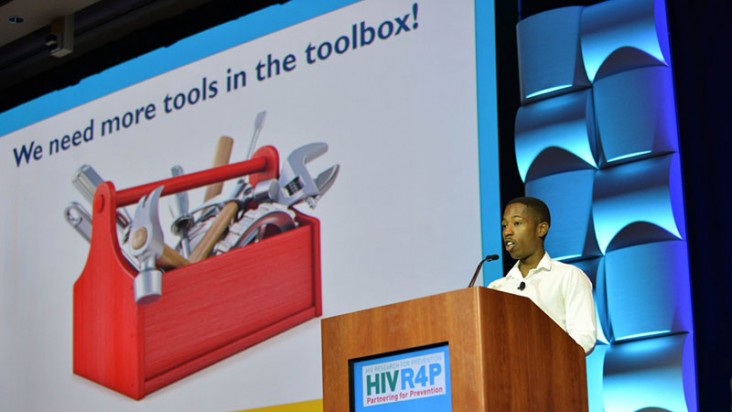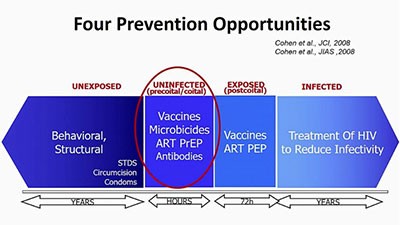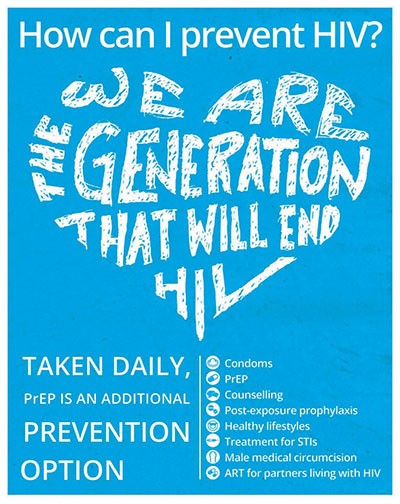- What We Do
- Agriculture and Food Security
- Democracy, Human Rights and Governance
- Economic Growth and Trade
- Education
- Ending Extreme Poverty
- Environment and Global Climate Change
- Gender Equality and Women's Empowerment
- Global Health
- Water and Sanitation
- Working in Crises and Conflict
- U.S. Global Development Lab


Emma Burgess, MSc.
Research Intern
Emma Burgess is a master of science graduate who is passionate about action-oriented research that advances sexual health and works to achieve reproductive justice.
Recent Blog Posts
- Health Benefits of Linking women to Cervical Cancer Screening in Zambia
Samantha Luffy - September 30, 2016 - Q & A with the New OHA Director Doug Arbuckle
OHA Communications - September 21, 2016
It has been about a week since the second HIV Research for Prevention (HIVR4P) conference came to a close in Chicago. I've spent that time digesting and reflecting on the vast amount of new research and passionate calls to action that the world's only scientific meeting dedicated exclusively to biomedical HIV prevention research can offer.
Opening plenary speaker, Dr. Mike Cohen, categorizes the diverse opportunities for HIV prevention into four categories across a continuum of potential users: those who are unexposed, uninfected, exposed or infected. This continuum is complex and ever changing through an individual's trajectory across their lifetime. People often experience cycles of differing risk, meaning prevention needs are constantly changing. Additionally, the effectiveness and availability of various prevention methods within the four opportunities may be affected by access to the healthcare structures where they live, which can be further complicated by their social status. This is why the Office of HIV/AIDS (OHA) Research Division has increased its focus on delivery and end-user acceptability throughout HIV prevention product research and development, including the early stages. This approach was evident throughout the many presentations of USAID-supported work at HIVR4P.
2016 HIVR4P
At the 2016 HIV Research for Prevention Conference (HIVR4P), there were 724 Abstracts, 144 oral presentations, 24 oral abstracts and 21 Satellites, of which a significant amount were supported through the U.S. Agency for International Development (USAID) and its partners.

The week began – as conferences often do – with satellite sessions. OHA's Margaret McCluskey initiated and co-chaired a session that brought together African scientists, policy makers, advocates and funding institutions. The "HIV Vaccine Design and Development Partnerships in Africa: Showcasing African-led Basic HIV Prevention Science Research" satellite highlighted new partnership models that are beginning to increase basic HIV prevention research, led by Africans, in research centers based in Africa. Sparking novel opportunities for collaborations that foster discovery and innovation, highlighted partnership models included the USAID-supported VISTA model, the Medical Research Council South Africa model and the European and Developing Countries Clinical Trials Partnership model.
Encouraging innovation in basic sciences drives exciting biomedical prevention breakthroughs. But finding products that work is not enough. In another plenary, Dr. Sharon Hillier stressed the need to develop HIV prevention approaches that are less stigmatizing, more easily incorporated into daily life, are desirable and are provided in settings that are less medicalized. USAID supports a number of products that are beginning to make this vision a reality. Current technologies being developed are discreet, longer acting, easily "on demand" and multipurpose. A small sample from HIVR4P includes: proof-of-concept for freeze-dried topical microbicide inserts and an exciting poster on biodegradable, subcutaneous arm implants for delivery of drugs to treat and prevent HIV.
Vaginal rings in all stages of development were also a hot topic at HIVR4P. Many presentations focused on methods for refining the measures to gauge how much the rings were actually used during trials. Refining these measurements is key to a better understanding of the product's ability to prevent HIV, without being confounded by cases where the product was not being used at all. One study presented found that women reporting a social harm in the last month were 2.53 times more likely to have low adherence during the ASPIRE vaginal ring trial, emphasizing the need for non-adherence strategies that help reduce social harms. Two ongoing open-label extensions of ASPIRE and The Ring Study, HOPE and the USAID-funded DREAM trial, will offer new insight into when, how and why women use the ring.

USAID's Microbicide Product Introduction Initiative (MPii) was featured in numerous posters throughout HIVR4P and culminated in a well-attended satellite on Friday. MPii's five projects, CHARISMA, OPTIONS, GEMS, POWER and EMOTION, work to accelerate the introduction of products into real-world settings and aim to increase access to advances in biomedical technologies and new approaches for HIV prevention – all while focusing on what African women actually want as the end user. MPii EMOTION partners, IDEO and CONRAD, presented educational materials, product packages and service delivery mechanisms informed by human-centered design and socio-behavioral research. An example that stood out was a pill carrying case that looked more like a blush container with a rubberized interior for the placement of seven pre-exposure prophylaxis (PrEP) pills, combined discretion (no pill rattling!) with an easy way to keep track of taking the pill or not. Later, Wits RHI and McCann Health teamed-up under OPTIONS to show how empowering messaging can influence PrEP demand creation in South Africa with their "We Are the Generation that Will End HIV" campaign.
Globally, prevention research plays a vital role in reaching an AIDS-free generation by 2030. So, what must the field keep in mind as we invest precious time and resources into finding tools to prevent HIV?
- Ingenuity: Optimizing delivery of the prevention tools we already have while working urgently on new ones.
- Collaboration: Maintaining and building partnerships that facilitate new thinking, fast and informed decision-making, while reducing duplication.
- Individuals: Developing and implementing prevention methods for end-users, so they can meet their individual needs throughout their ever-changing cycles of risk.
The HIV research prevention field continues to innovate and persevere on all fronts, so onward to HIVR4P 2018!







Add new comment